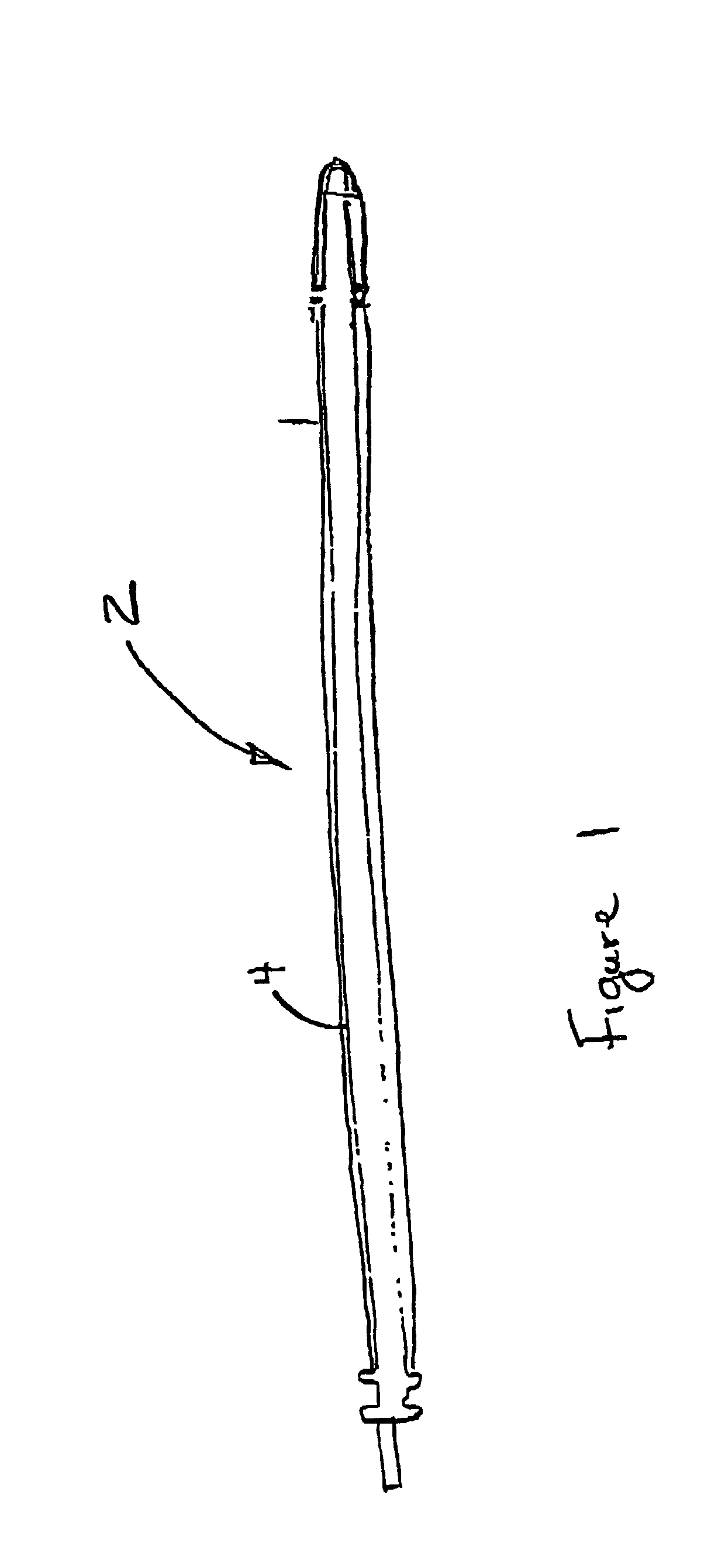Implantable medical device having biologically active polymeric casing
a medical device and polymer technology, applied in the field of implantable medical devices having biologically active polymeric casings, can solve the problems of serious complications including death, bacteria colonization of implanted medical devices, and failure to use antimicrobial coatings on pacemaker leads, so as to prevent or reduce infections
- Summary
- Abstract
- Description
- Claims
- Application Information
AI Technical Summary
Benefits of technology
Problems solved by technology
Method used
Image
Examples
Embodiment Construction
[0010]One way to reduce infection at the implanted medical device (IMD) is to prevent the adhesion of the microorganism at the surface of the IMD. If the surface chemicals are changed or modified with a biologically active agent such as a microbial peptide agent, an antimicrobial agent such as those synthesized with quinolone drugs (e.g. Ciprofloxacin, Norfloxacin), an antibiotic such as Gentamyacin or Zithromax, a biocompatible detergent such as Pluronic® brand PE-EO block polymer sold by BASF, a non-steroidal anti-inflammatory drug, a cation, an amine-containing organosilicone, a fatty acid or a fatty acid salt, bacterial adhesion to the surface of the IMD is discouraged. It is proposed that polyurethane and silicone rubber polymers used in bradycardia, tachycardia and neurological leads can be modified using certain adhesion reducing surface modifying end groups such as a detergent, salicylic acids such as aspirin or ibuprofin (non-steroidal anti-inflammatory agents), fatty acid ...
PUM
| Property | Measurement | Unit |
|---|---|---|
| adhesion | aaaaa | aaaaa |
| biocompatible | aaaaa | aaaaa |
| bacterial adhesion | aaaaa | aaaaa |
Abstract
Description
Claims
Application Information
 Login to View More
Login to View More - R&D
- Intellectual Property
- Life Sciences
- Materials
- Tech Scout
- Unparalleled Data Quality
- Higher Quality Content
- 60% Fewer Hallucinations
Browse by: Latest US Patents, China's latest patents, Technical Efficacy Thesaurus, Application Domain, Technology Topic, Popular Technical Reports.
© 2025 PatSnap. All rights reserved.Legal|Privacy policy|Modern Slavery Act Transparency Statement|Sitemap|About US| Contact US: help@patsnap.com


